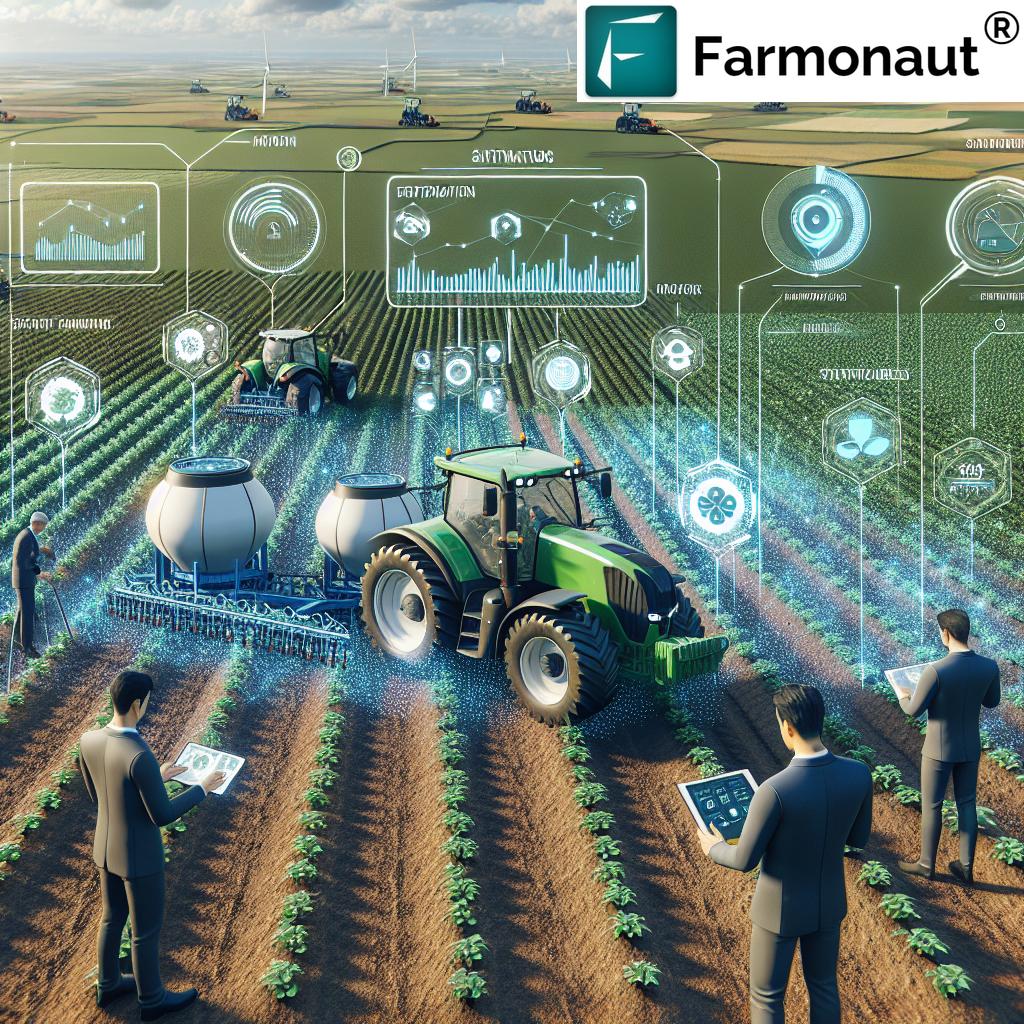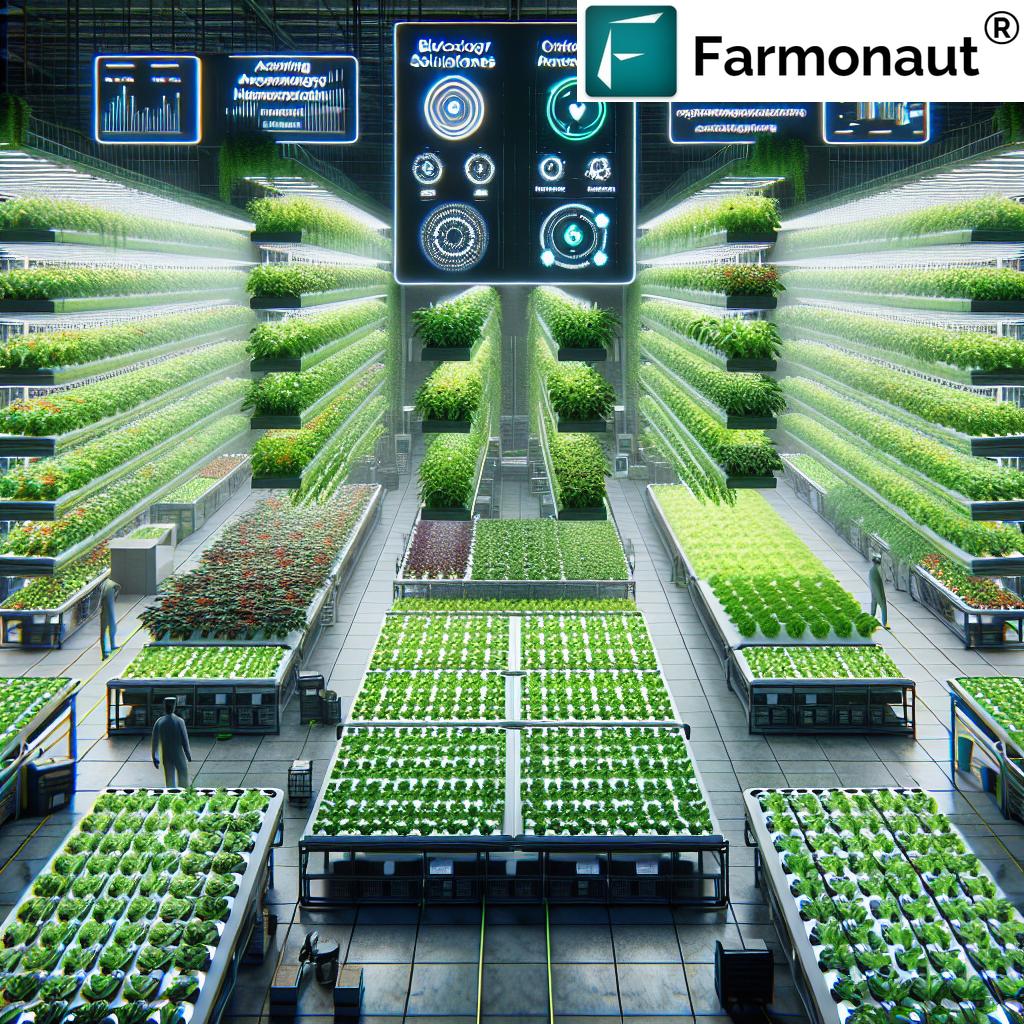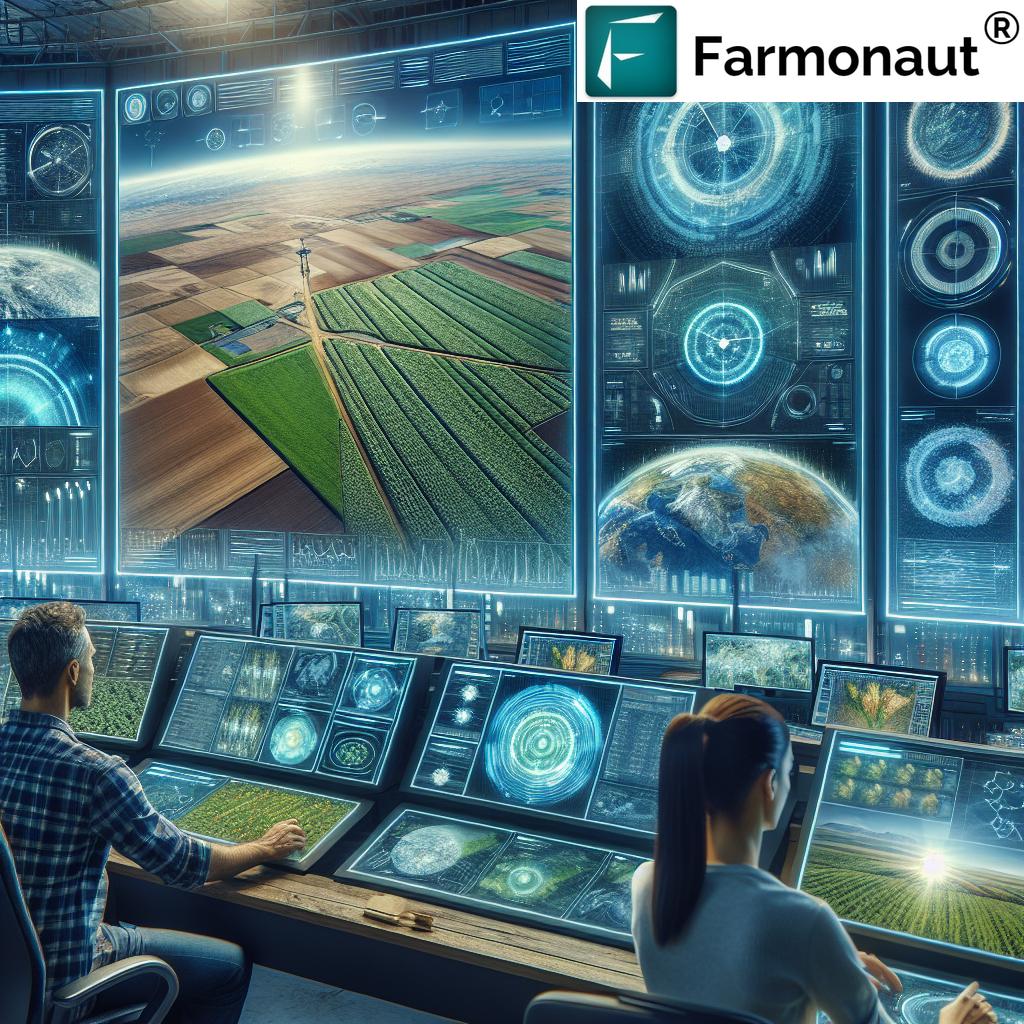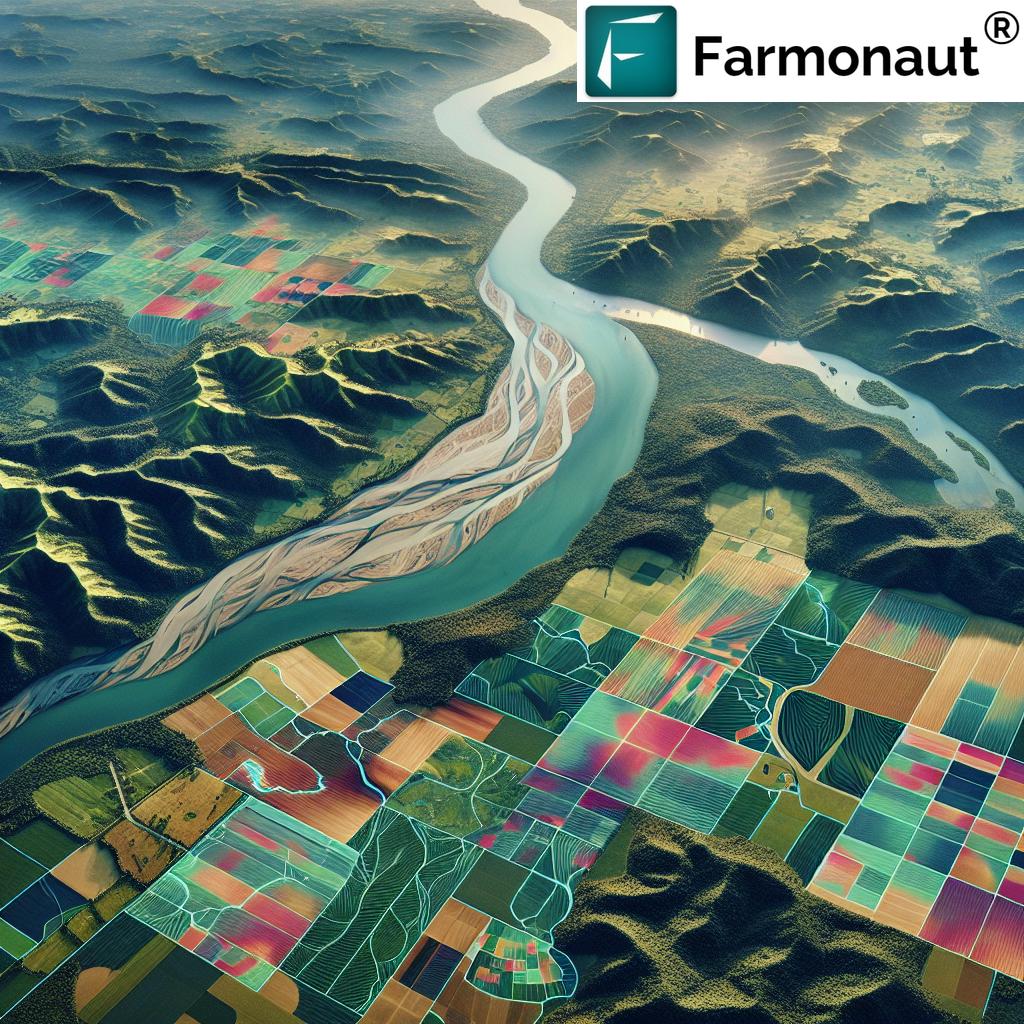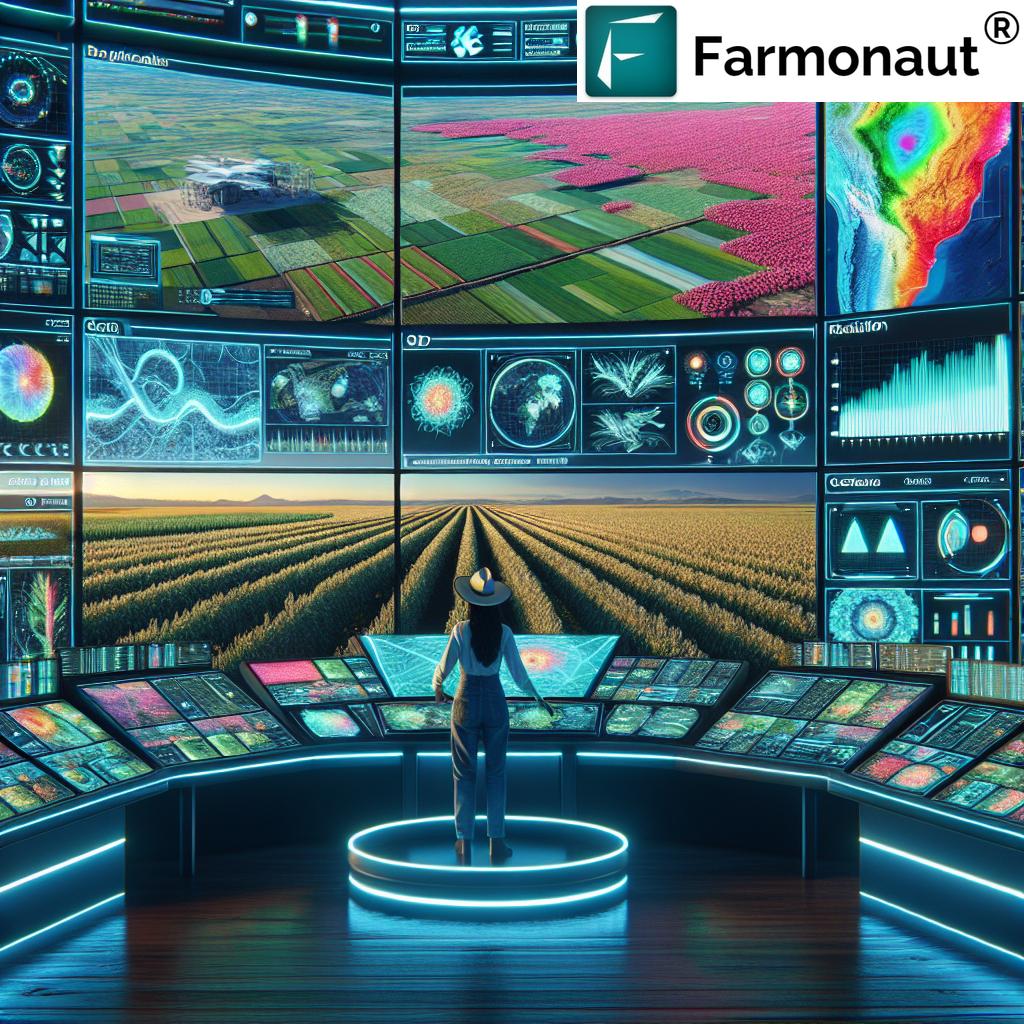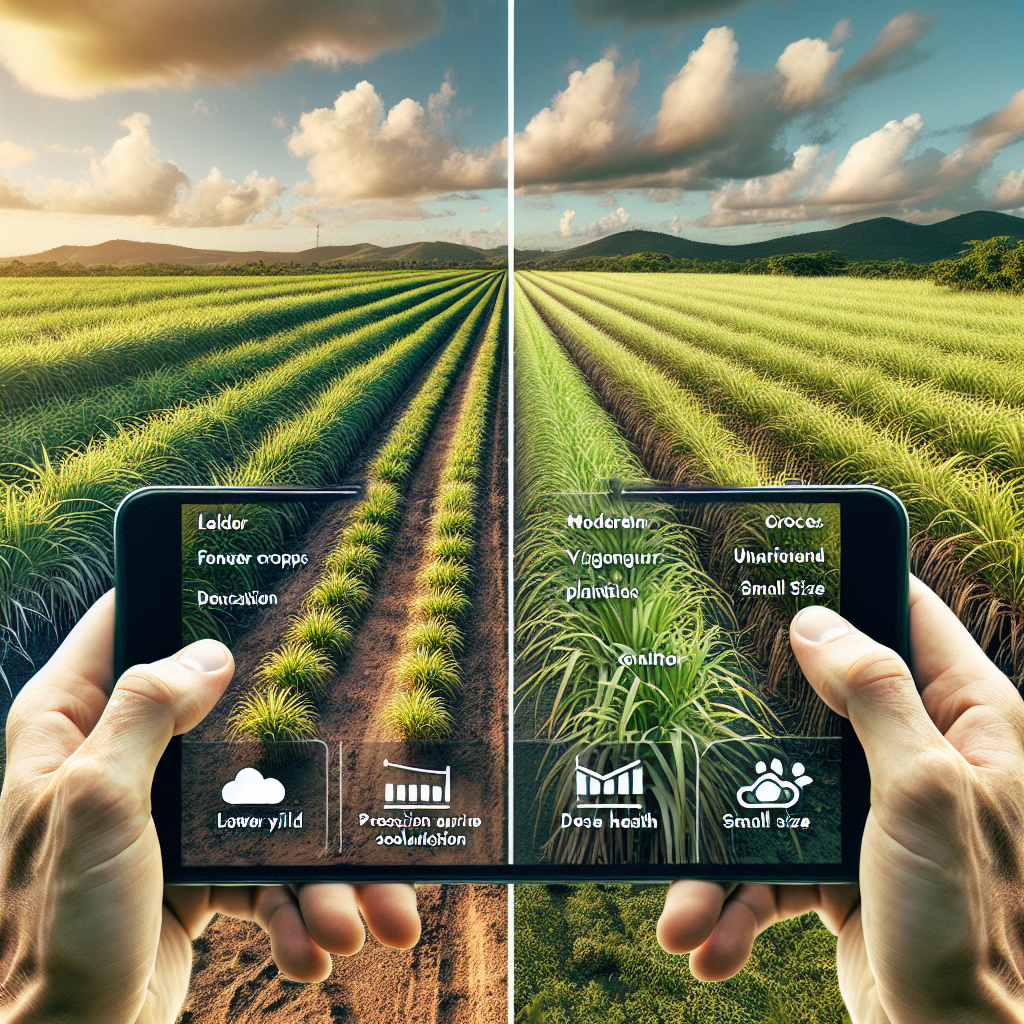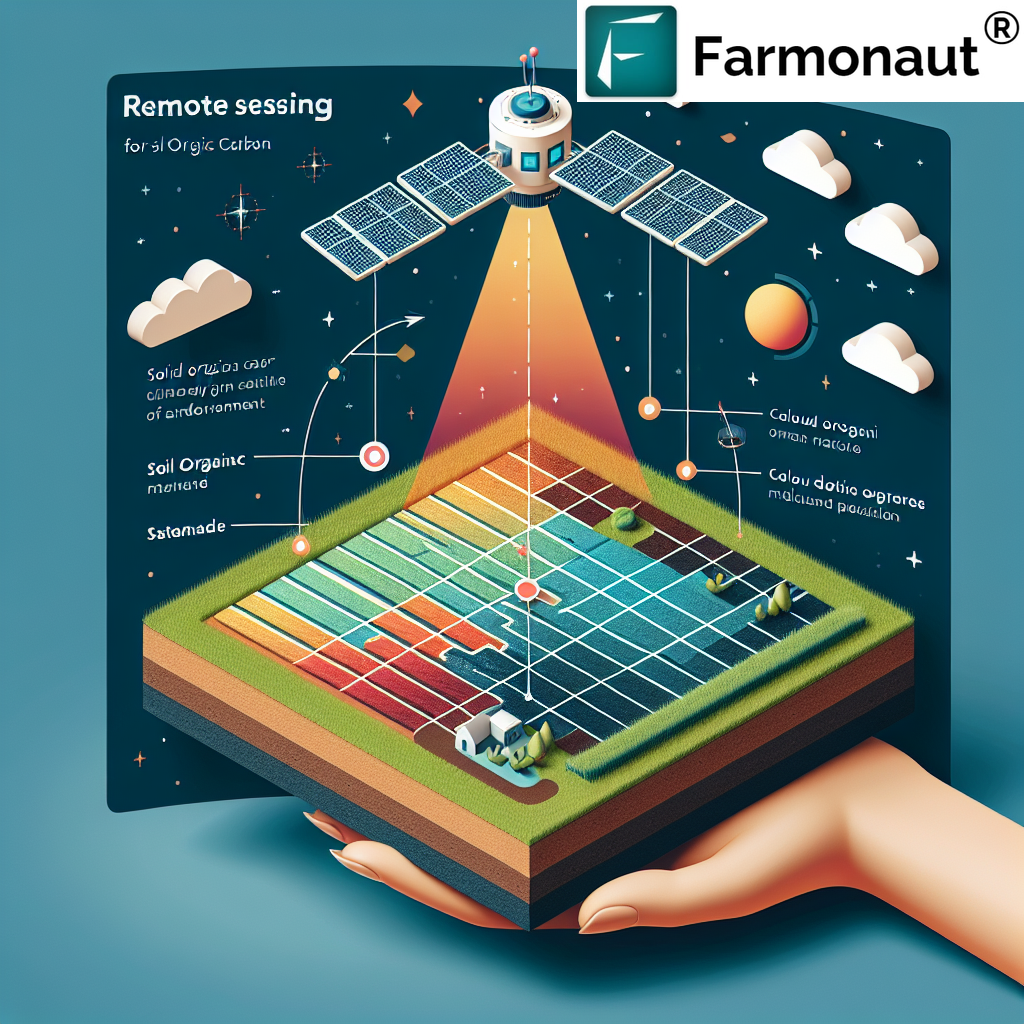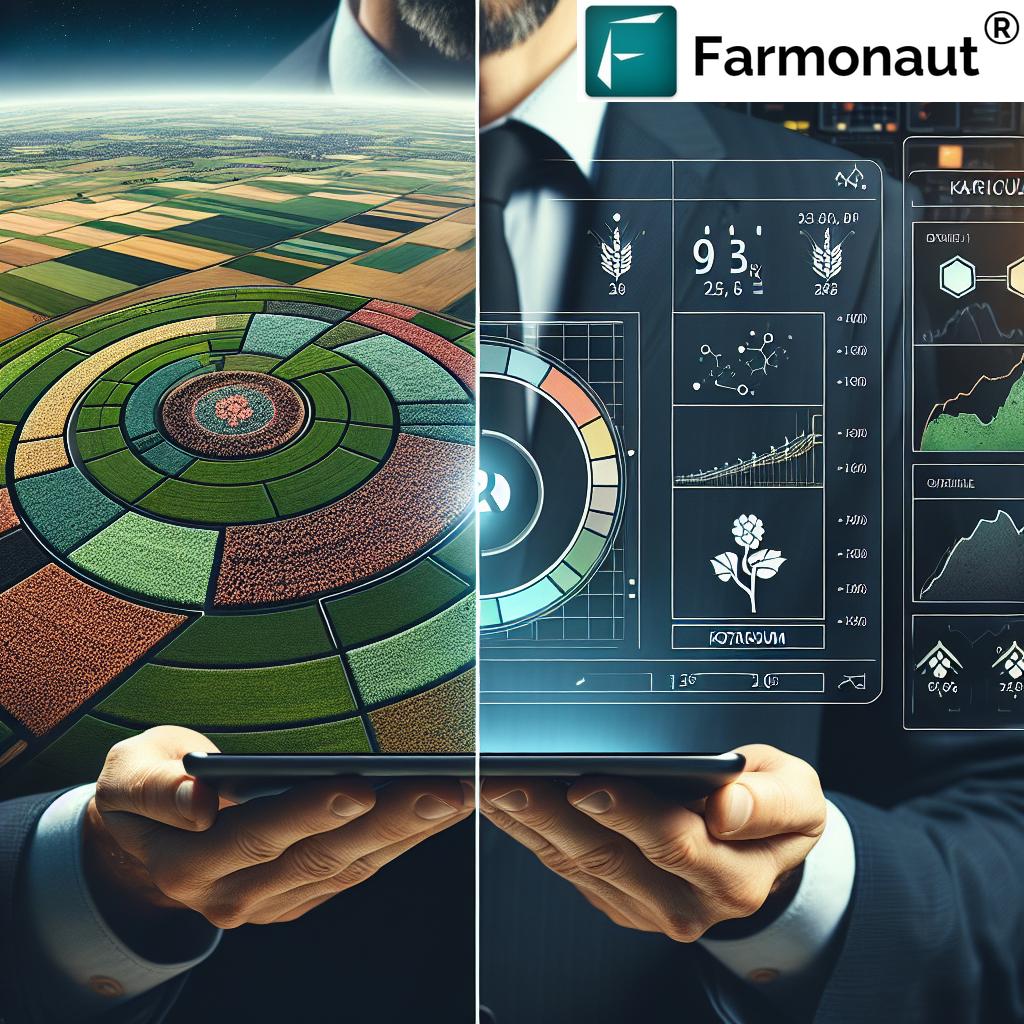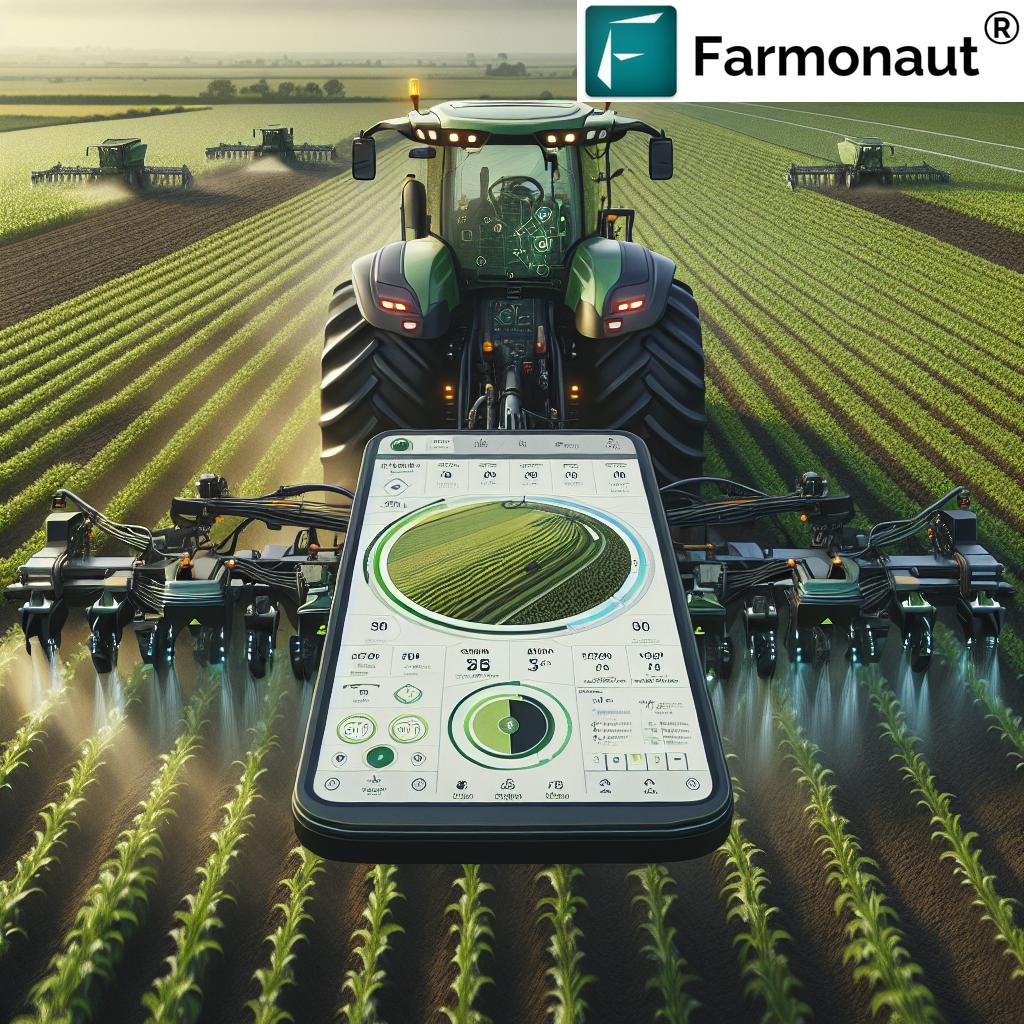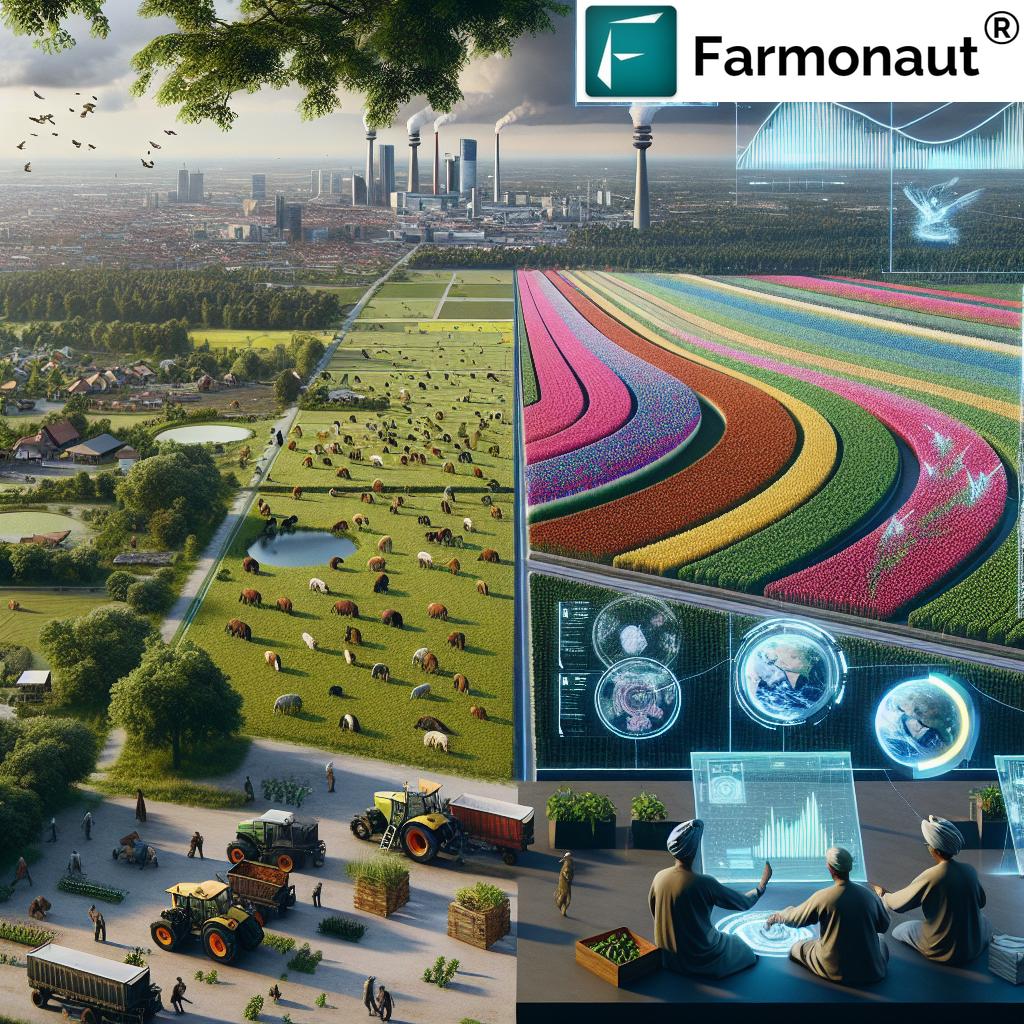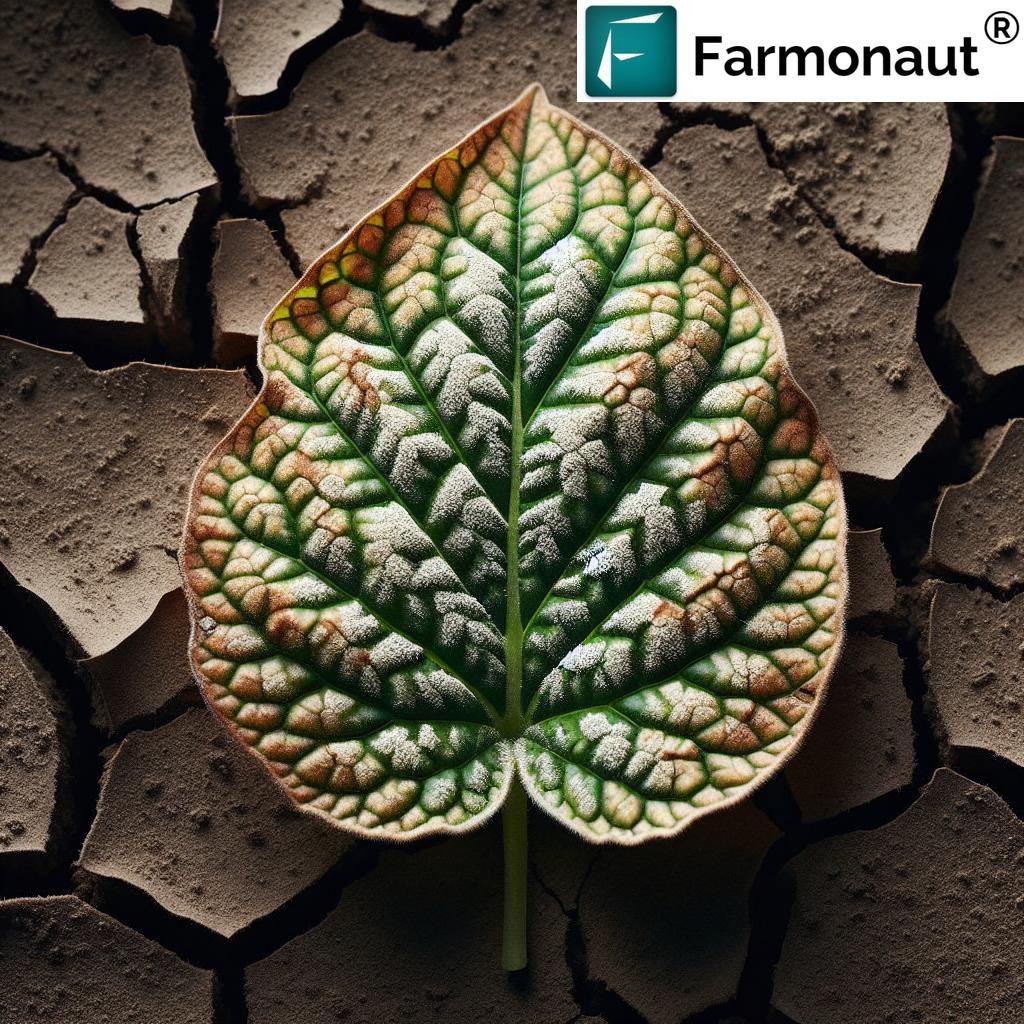Agricultural Technology: 7 Innovations Boosting Farming
Introduction to Agricultural Technology Innovations
Agriculture and forestry are experiencing a technological revolution, as new agricultural technology innovations reshape how we farm, manage resources, and address environmental and economic challenges. At the heart of this transformation are advancements like precision agriculture, AI in agriculture, and smart irrigation systems. These innovations help optimize crop production, conserve resources like water and soil, improve efficiency, and foster sustainable farming practices that support expanding global food demands. This blog explores seven pivotal innovations powering the modern agricultural sector and their profound impact on the future of farming and forestry.
Precision Agriculture: Transforming Crop Management
What is Precision Agriculture and How Does it Work?
Precision agriculture, sometimes called site-specific or satellite farming, uses advanced technology—including GPS, remote sensing, and data analytics—to monitor field variability and tailor crop management. Farmers can optimize the use of water, fertilizers, and pesticides by focusing resources only where needed, based on real-time and historical agriculture data.
- Satellite and drone imagery: Provide continuous crop health monitoring.
- GPS-enabled autonomous tractors: Automate planting, harvesting, and field navigation for optimal coverage.
- Soil sensors: Measure moisture levels, nutrients, and other field conditions to improve input application.
By implementing precision agriculture, farmers significantly reduce waste, cut operating costs, and increase yields through smarter, data-led decisions. For example, using satellite data, they can identify areas needing more irrigation or fertilizer, while avoiding over-application in other areas. This not only improves efficiency, but also reduces the environmental impact by minimizing resource runoff and carbon footprints.
Real-World Applications of Precision Agriculture
- Use of autonomous tractors to minimize human intervention and address labor shortages.
- Integration of remote sensing data in carbon footprint tracking for environmental sustainability.
- Adoption of advanced field management systems for large-scale farm management like Farmonaut’s Agro Admin App.
With precision agriculture, fields are no longer treated uniformly. Data from satellites, drones, and sensors reveals spatial differences, helping deploy agricultural inputs only where they are needed, in real time.
AI in Agriculture: Data-Driven Decisions with Artificial Intelligence & Machine Learning
Harnessing AI & Machine Learning in Farming
The rise of AI in agriculture is accelerating the shift to data-driven farming. Artificial Intelligence (AI) and Machine Learning (ML) systems analyze vast amounts of data from diverse sources—from weather forecasts, soil conditions, to historical harvest records—enabling predictive algorithms that guide planting and management.
- Predictive analytics: Anticipate crop yields and potential disease outbreaks.
- Precision scheduling: Use AI to time planting, harvesting, and irrigation based on weather and soil data.
- Reduced pesticide usage: AI-driven pest monitoring and targeted treatment minimize chemical usage, supporting sustainability.
AI-powered agriculture data analytics lead to smarter, more sustainable farming practices. For instance, real-time sensors combined with AI models can automatically monitor crop health and adjust irrigation or nutrient supply, optimizing productivity while lowering costs.
How AI in Agriculture Improves Productivity
- Enables real-time crop monitoring based on changing soil and weather conditions.
- Adopts AI-based farm advisory for location-specific, crop-specific recommendations.
- Reduces risk through historical data analytics and weather prediction models.
We, at Farmonaut, integrate AI and ML in our solutions—such as the Jeevn AI Advisory System—to provide customized insights and weather forecasts for our users, empowering them to make better decisions and enhance crop performance.
Explore our API Developer Docs here to see how you can integrate satellite-based AI farm insights into your systems.
Robotics and Automation in Farming
The Role of Robotics & Automation in Addressing Labor Shortages
Robotics and automation in farming are revolutionizing field operations and addressing critical labor shortages. Advanced robotics not only boost operational efficiency but also execute tasks—from planting and weeding to harvesting and monitoring—with unmatched precision.
- Autonomous vehicles (tractors, harvesters): Operate 24/7, ensuring timely farm production and resource use.
- Robotic harvesters: Pick fruits and vegetables, reducing waste and human error in processing.
- Drones: Monitor crop health, apply fertilizers or pesticides, and collect multispectral imagery for analytics.
The adoption of robotics and automation allows farms to optimize their systems, increase consistency, and reduce the reliance on seasonal manual labor. Particularly in regions battling workforce scarcity, these technologies secure food supplies and farm revenue.
Key Benefits of Robotics in Agriculture
- Enhanced productivity through automation of repetitive or complex tasks.
- Improved resource management via data-driven operations—such as optimal irrigation and fertilizer application.
- Increased safety by minimizing human exposure to hazardous substances.
Farmonaut supports automation by delivering real-time data to farm management systems, enabling seamless operation of fleets and autonomous machinery. Discover our fleet management solutions for streamlined rural logistics and large scale operations.
Internet of Things in Agriculture: Real-Time Monitoring & Control
Leveraging IoT to Optimize Farming Practices
The Internet of Things in agriculture (IoT) encompasses networked devices like weather stations, soil sensors, and crop monitors that continuously feed data to farmers for timely decisions. By integrating environmental sensors and remote-control technologies, farmers can optimize crop performance, manage irrigation schedules, and even monitor livestock health remotely.
- Smart Farming Systems: Automate irrigation, nutrient feeding, and pest control based on real-time sensor data.
- Real-time alerts: Notify when anomalies are detected, enabling rapid intervention to save resources and prevent crop loss.
- Cloud dashboards: Consolidate and visualize field data to improve transparency, analysis, and management.
The benefits of IoT are transformative: increased yield, reduced costs, enhanced resource conservation, and simplified farm management. For example, soil moisture data can automate smart irrigation systems, preventing over- or under-watering of crops.
Farmonaut’s platform allows full integration of IoT crop monitoring with satellite data, empowering growers and agribusinesses to fine-tune their input strategies and improve resource optimization.
Smart Irrigation Systems for Sustainable Water Use
Combatting Water Scarcity with Technology
Smart irrigation systems use real-time weather, soil moisture, and crop health data to automate water delivery—ensuring crops get the right amount of water at the right time. This dramatically improves irrigation efficiency and supports sustainability in agriculture.
- Sensor-driven drip irrigation delivers water directly to the plant’s root zone, reducing evaporation and waste.
- Software based on AI and data analytics can predict optimal irrigation schedules by analyzing multiple data sources, including recent weather patterns, crop stage, and soil type.
- Remote management enables farmers to monitor and control irrigation infrastructure from their smartphone or web app.
By implementing smart irrigation systems, farms use up to 30% less water, lower input costs, and protect vital resources—directly contributing to long-term agricultural sustainability.
For those deploying smart irrigation at a larger scale, integration with Farmonaut’s advisory and monitoring modules empowers smarter water management and analytics.
Vertical Farming Solutions & Urban Agriculture
Addressing Urbanization & Space Constraints
Vertical farming solutions and urban agriculture are answering the call for food production in cities, where arable land is scarce. By growing crops in stacked layers using hydroponic or aeroponic systems, vertical farming maximizes output per meter of land while minimizing water and nutrient inputs.
- Utilizes LED lighting and climate control systems to enable year-round crop production.
- Reduces water usage by up to 90% compared to traditional field farming.
- Delivers fresh produce to urban consumers with lower transportation emissions and costs.
Modern vertical farms create a sustainable, efficient solution for feeding growing urban populations, supporting food security, and reducing environmental impact. These innovations are increasingly powered by integrated IoT, AI, and automation for optimized management.
Benefits of Urban and Vertical Agriculture
- Reduces dependency on rural land and resources.
- Enables controlled-environment agriculture for better protection against climate change effects.
- Boosts local food availability, complements traditional systems, and shortens supply chains.
As we seek city-based farming approaches, combining vertical systems, IoT devices, and blockchain traceability (see Farmonaut’s traceability platform) builds consumer trust and accountability from “farm to fork.”
Biotechnology in Crop Production: Genetic Engineering & Crop Improvement
How Biotechnology Reshapes Agriculture
Biotechnology in crop production uses genetic engineering to develop plants with improved traits—such as disease resistance, drought tolerance, or better nutritional content. Biotech advances like CRISPR gene editing and GMOs allow precise, targeted crop improvements.
- Develops crops that resist pests and extreme weather conditions.
- Reduces dependence on chemical fertilizers and pesticides through engineered plants and soil microbes.
- Enables food production in marginal soils and challenging climates.
Biotechnology enables more abundant, nutritious, and resilient crops, supporting both smallholder and industrial-scale farms in feeding a growing world population.
Key Applications of Agricultural Biotechnology
- Engineering drought-tolerant maize, rice, and wheat for regions vulnerable to climate change.
- Gene editing to improve protein quality or introduce biofortification for better nutrition.
- Designing beneficial microbes for natural nitrogen fixation in soils, reducing the need for synthetic fertilizers.
Bioteching farming practices leads to sustainable food security, higher yields, and less environmental stress, supporting global goals for agricultural sustainability.
Nanotechnology: The Next Leap in AgTech
Nano-Fertilizers, Nano-Pesticides & Nano-Sensors
Nanotechnology in agriculture brings highly efficient, targeted solutions using tiny particles and sensors (nano fertilizers, nano pesticides, nano sensors) to solve old farming challenges in new ways. With precise application, nanotechnologies increase input efficacy and reduce losses.
- Nano-fertilizers: Deliver nutrients directly to crops in controlled doses, increasing bioavailability and reducing leaching.
- Nano-pesticides: Achieve precise pest targeting and controlled release, minimizing environmental contamination.
- Nano-sensors: Monitor soil health, detect pathogens, and send real-time alerts to farmers or automated systems.
This suite of advanced agricultural technology innovations enables resource conservation, reduces reliance on broad-spectrum chemicals, and boosts farm efficiency for the next generation of farming.
Comparative Overview Table of Key Agricultural Technologies & Innovations
| Innovation Name | Description | Primary Benefit | Estimated Adoption Rate (% of global farms, est.) | Environmental Impact | Example Implementation |
|---|---|---|---|---|---|
| Precision Agriculture | Use of GPS, remote sensing, and analytics to manage field variability | Maximize yield, minimize waste | 20–25% | High (reduced inputs/waste) | Satellite-based crop health analysis |
| AI in Agriculture | Artificial intelligence for predictive analytics, advisory, and automation | Data-driven decisions, improved productivity | 10–15% | High (optimized resource use) | Crop disease prediction via satellite-ML |
| Smart Irrigation Systems | Automated, sensor-driven irrigation scheduling | Save water, increase efficiency | 30–35% | High (water conservation) | IoT-integrated drip irrigation |
| Robotics & Automation | Autonomous machinery for planting, harvesting, and monitoring | Reduce labor dependency, boost yield | 10–12% | Medium (energy use offset by efficiency) | Drones for weeding/monitoring |
| Vertical Farming Solutions | Stacked-layer agriculture using hydroponics/aeroponics | Maximize urban space, year-round production | <5% | High (reduced land/water use) | LED-lit indoor urban farms |
| Biotechnology in Crop Production | Genetic engineering for improved traits, resilience, yield | Boost resilience and nutrition | 18–20% | Medium (variable, often positive) | CRISPR-edited drought-tolerant crops |
| Nanotechnology in Agriculture | Nano fertilizers/pesticides/sensors for precise application | Increased input efficiency, real-time monitoring | 2–4% | High (targeted resource use) |
Nano-enabled pathogen detection |
Agroforestry & Sustainable Farming Practices
Integrating Trees for Long-Term Farm Productivity
Agroforestry combines agriculture and forestry by interspersing trees and shrubs with crops or livestock systems. This sustainable farming practice increases carbon sequestration, enhances biodiversity, improves soil fertility, and provides additional food, feed, or timber resources.
- Restores degraded land and protects soils from erosion.
- Mitigates climate change by storing carbon in biomass and soil.
- Reduces reliance on chemical inputs by fostering natural ecosystem services.
Adopting agroforestry practices provides a win-win for farmers, the environment, and local communities, while supporting broader sustainability and conservation goals. With advanced monitoring solutions like Farmonaut’s satellite-based platform, landowners can precisely quantify the environmental impact of their agroforestry projects and optimize land use for the future.
Current Challenges & Future Outlook for AgTech
- High initial investment costs can be a barrier, particularly for smallholder or rural farmers.
- Technological complexity: Demands training and support for effective adoption and management.
- Data privacy & cybersecurity: Protecting data is critical as farms become more connected and digitized.
- Labor displacement: Automation may change rural employment patterns, requiring new skill development for future workforces.
To ensure agricultural technology innovations deliver widespread benefits, future efforts must prioritize making these technologies more accessible, affordable, and user-friendly—especially in developing regions. Emphasizing solutions that balance productivity, environmental stewardship, and economic inclusion will drive resilient food systems in a rapidly changing world.
How Farmonaut Empowers Modern Farming
Our Role in the Future of Precision Agriculture
At Farmonaut, our mission is to bridge the gap between advanced technology and everyday farming reality. Our comprehensive platform integrates satellite imagery, artificial intelligence, blockchain-based traceability, and data analytics to make precision agriculture affordable and actionable for all types of farmers.
- Satellite-based crop health monitoring gives up-to-date insights on soil and plant conditions, helping users make better decisions for irrigation, fertilizer, and pest management.
- Our Jeevn AI Advisory System provides personalized recommendations, including hyperlocal weather forecasts and management strategies.
- With our blockchain product traceability tool, every stage of a product’s journey—from farm to consumer—is transparent and secure.
- Fleet and resource management modules reduce operational costs and logistical bottlenecks for agribusinesses.
- For sustainability leaders, our carbon footprinting dashboard tracks and helps reduce the environmental impact of farm activities.
Our platform is accessible on Android, iOS, and as a web app, ensuring everyone from smallholder farmers to large agribusinesses and government users can benefit from advanced crop monitoring, efficiency optimization, and sustainability features. Our scalable model and API integrations also empower developers and research organizations to incorporate real-time satellite/weather data in their own systems. Learn more about Farmonaut’s API access here.
For specialized needs such as crop loan and insurance verification, large-scale plantation management, and end-to-end supply chain traceability, Farmonaut provides ready-to-use and customizable solutions.
Farmonaut Subscription Plans
Experience affordable, scalable satellite-powered precision agriculture and farm management tailored to your needs, available globally with user-friendly interfaces.
FAQs on Agricultural Technology Innovations
What is precision agriculture and why is it important?
Precision agriculture is a farming approach that utilizes technology like GPS, satellite imagery, and data analytics to monitor and manage field variability. It is important because it significantly increases efficiency, reduces waste, and leads to higher crop yields while minimizing environmental impact.
How does AI in agriculture improve productivity?
AI in agriculture analyzes vast amounts of farm data to deliver actionable insights for crop management, pest control, and resource use. It enables predictive analytics, optimizes input schedules, and supports sustainable decisions, resulting in improved productivity and reduced costs.
What are the main benefits of smart irrigation systems?
Smart irrigation systems use sensors and weather data to automate water delivery, ensuring crops receive the right amount at the right time. They help reduce water wastage, save on operational costs, and promote environmentally responsible farming.
Can smallholder farmers afford these technologies?
While high initial costs have been a challenge, companies like Farmonaut are democratizing access to advanced technologies with affordable, flexible subscription models and app-based platforms that support farmers of all scales.
What role does biotechnology play in modern agriculture?
Biotechnology enables the development of crops with improved resistance to diseases, changing weather, and environmental stress. Techniques like gene editing and the use of beneficial microbes help boost yields and reduce dependency on chemicals, advancing sustainable food production.
How does Farmonaut support sustainable farming practices?
We offer satellite-powered monitoring, AI-based advisory, blockchain-enabled traceability, and carbon footprint tracking. These tools help optimize crop management, promote efficient input use, support environmental compliance, and enhance sustainability across all farm sizes and types.
Are there risks in adopting agricultural technology?
As with any technology shift, there are risks related to cost, data privacy, and training requirements. However, adopting these innovations is essential for long-term food security, resource efficiency, and environmental sustainability.
Conclusion: The Future of Farming with AgTech Innovations
The path to future-ready agriculture is paved with agricultural technology innovations—from precision agriculture and AI in agriculture to smart irrigation systems, vertical farming solutions, biotechnology in crop production, and nanotechnology. These technologies profoundly impact global farming systems, enabling sustainable practices, improved yields, and resource conservation. As climate and food security challenges intensify, integrating these agtech solutions assures a resilient future for farmers and consumers alike. By making data-driven, technology-enabled decisions accessible to all, the industry is evolving towards a more prosperous, sustainable tomorrow.
Join the movement—download the Farmonaut app or explore our API documentation to empower your farm with the latest in agricultural innovation.


